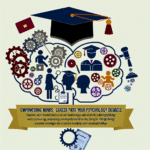
Introduction
In today’s rapidly evolving educational landscape, the phrase "Stronger Together" echoes loudly among educators, parents, and students alike. An effective partnership between families and schools is crucial for student success, enhancing academic outcomes and fostering emotional well-being. But how do we develop these partnerships? This article delves into "Stronger Together: Effective Strategies for Fostering Family-School Partnerships," offering insights and strategies to bridge gaps, promote collaboration, and cultivate a thriving educational community.
The Importance of Family-School Partnerships
As educational philosophies shift toward a more holistic approach to teaching, understanding the role of family engagement becomes essential. Numerous studies suggest that when families actively participate in their children’s education, overall performance improves significantly. According to the National Center for Family and Community Connections with Schools, students with strong family-school partnerships show higher grades, improved behavior, and increased attendance.
Benefits of Effective Family-School Partnerships
- Enhanced Student Achievement: Research reveals that engaged families directly correlate to higher academic performance (Henderson & Mapp, 2002).
- Social Stability: Schools that cultivate partnerships with families create communities where students feel safe and supported.
- Skill Development: Partnerships foster critical thinking, problem-solving, and collaboration skills in students.
A greater emphasis on collaboration allows parents to serve as active participants rather than passive recipients of information.
Building Trust: The First Step Towards a Stronger Partnership
Open Communication Channels
Establishing open lines of communication is crucial for fostering trust between families and schools. This can be achieved through:
- Regular Updates: Schools should provide frequent updates via newsletters, emails, or social media.
- Parent-Teacher Conferences: These meetings allow for meaningful dialogue about student performance and goals.
- Feedback Surveys: Encouraging parents to share their thoughts helps schools improve and meet community needs.
Case Study: The Campbell School Initiative
At Campbell School, the administration implemented a monthly newsletter that included not only academic updates but also resources and tips for parents to support their children at home. In just one academic year, parental attendance at events increased 75%, leading to a measurable uptick in student performance.
Analysis
The Campbell School Initiative illustrates that proactive communication can create significant engagement, serving as an example for other institutions looking to bolster family-school relationships.
Collaborative Practices: Working Together for Student Success
Family Engagement Programs
Creating structured programs that invite family involvement can energize relationships. Schools can consider initiatives like:
- Family Workshops: These can focus on academic support strategies or parenting skills.
- Volunteer Programs: Encouraging parents to participate in school activities fosters a sense of belonging.
- School Events: Organizing family nights or cultural events can bring the community together, strengthening connections.
Case Study: The Lincoln Family Nights
Lincoln Elementary School hosts quarterly Family Nights, featuring team-based activities like science fairs and talent shows. This initiative has led to a 40% increase in family engagement, as parents feel more comfortable and connected to the school.
Analysis
Lincoln’s approach demonstrates how collaborative events can break down barriers, making families feel more invested in their children’s education while fostering community spirit.
Empowering Families: Providing Resources for Involvement
Informative Workshops and Resources
A key strategy for building successful partnerships is empowering families through education. Schools should provide resources related to:
- Curriculum Insights: Offering workshops to explain curriculum goals and state standards can demystify the learning process.
- Parenting Skills: Workshops on subjects like effective discipline strategies or adolescent psychology can equip parents for personal challenges.
Case Study: The Riverside Parent Academy
Riverside High School initiated a Parent Academy that provides workshops on various topics ranging from technology use to mental health. As a result, parents report feeling more informed and engaged, with student test scores increasing by 10% in the following academic year.
Analysis
The Riverside Parent Academy highlights the importance of empowering families with knowledge. By doing so, schools can positively impact student outcomes and foster a sense of community.
Integrating Technology: Bridging Miles with Digital Tools
Online Platforms for Communication
In our tech-centric world, utilizing digital tools can facilitate communication and engagement:
- Educational Apps: Platforms like ClassDojo or Remind keep parents informed and involved.
- Virtual Meetings: Providing the option for virtual parent-teacher conferences can accommodate busy schedules.
Case Study: The Digital Transformation at the Thompson School
Thompson School adopted a digital parent communication tool that allowed daily updates on student performance. Parents noted a significant improvement in their understanding of their child’s education, leading to an overall boost in student enthusiasm and engagement.
Analysis
The Thompson School’s digital strategy underscores the potential of technology to enhance communication and facilitate greater engagement between families and schools, especially in today’s busier lifestyles.
Overcoming Barriers to Engagement
Identifying Challenges
Despite the myriad benefits, many schools face barriers such as language differences, economic constraints, and cultural variations. Recognizing these challenges is essential in developing effective strategies.
- Language Barriers: Providing translators can create an inclusive environment for non-English speaking families.
- Economic Constraints: Offering flexible meeting times can accommodate families with varying work schedules.
Case Study: The Multicultural Outreach at the Greenfield Academy
Greenfield Academy launched a multicultural initiative aimed at engaging immigrant families through translated materials and community liaisons. Their efforts resulted in a remarkable 60% increase in family participation at school events.
Analysis
Greenfield Academy’s approach to inclusion highlights how addressing barriers can foster partnerships and ensure every family feels valued and recognized.
Creating a Collaborative Culture: From Administration to Classroom
School Leadership
Effective partnerships begin at the top. Leaders should model collaborative behavior, emphasizing the importance of family engagement throughout the school culture.
Teacher Training Programs
Educators should be trained to incorporate family involvement into their teaching strategies. This can include:
- In-Class Support: Encouraging parents to volunteer in classrooms.
- Parent Resource Centers: Creating spaces where parents can learn about school resources.
Case Study: The Holistic Approach at the Meadowbrook School
At Meadowbrook School, leadership prioritized comprehensive teacher training on family engagement, resulting in a substantial increase in classroom participation from parents. The school saw a significant rise in student scores, illustrating the direct benefits of cultivating a collaborative culture.
Analysis
Meadowbrook School demonstrates how prioritizing family engagement leads to a ripple effect in student success, showcasing the critical role of school leadership in fostering partnerships.
Conclusion
The phrase "Stronger Together" resonates deeply in education, emphasizing that collaboration between families and schools is not just beneficial but essential for student success. By employing effective strategies such as open communication, collaborative programs, and engaging digital platforms, schools can foster a thriving community that supports every child’s education.
As we work towards stronger family-school partnerships, let’s remember: every small step taken in collaboration makes a monumental difference in the lives of our students. Together, we can create a supportive and engaging educational environment, ensuring every child reaches their fullest potential.
FAQs
1. What are the most effective ways to encourage family involvement in schools?
Encouraging family involvement can be achieved through open lines of communication, structured programs for engagement, and regular updates on student progress.
2. How can schools overcome language barriers when engaging families?
Providing translation services and culturally relevant resources can help overcome language barriers, fostering inclusivity.
3. What role does technology play in family-school partnerships?
Technology enhances communication and facilitates engagement through apps, platforms for updates, and virtual meetings, making involvement more accessible for families.
4. Why is it important for teachers to receive training on family engagement?
Training equips teachers with strategies to effectively involve families in the educational process, contributing to improved student performance and engagement.
5. How can schools identify and address barriers to family engagement?
Schools should conduct surveys or focus groups to identify barriers and tailor strategies accordingly, ensuring every family feels welcome and supported in the school community.
By employing these insights and strategies, we embrace the power of being “Stronger Together: Effective Strategies for Fostering Family-School Partnerships.” Let’s continue to work collectively for a brighter future in education!

















